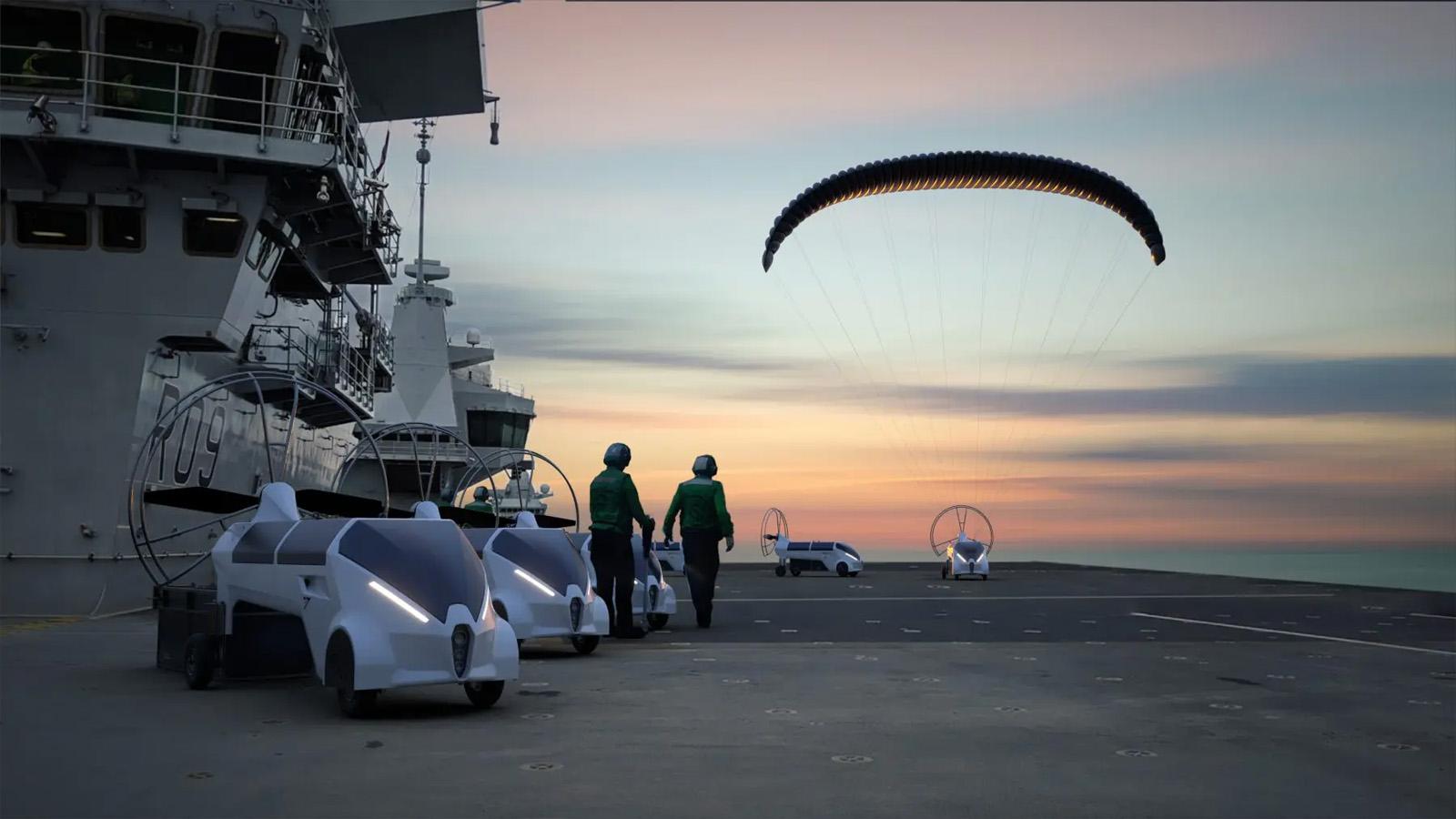
Stork
LONDON—The UK Royal Navy will experiment with a parafoil uncrewed aircraft system (UAS) to explore whether such platforms could be used to deliver supplies between ships and from ship to shore.
The UAS, called Stork, has been developed by UK firm Animal Dynamics, a company specializing in the development of autonomous systems that mimic the movements of animals.
The company has been developing the Stork system for more than five years, originally envisioning it as a low-cost system that could deliver equipment to the front line.
The latest version of Stork to be tested by the Royal Navy, Stork STM, will be able to carry a 135-kg (298-lb.) payload up to 400 km (250 mi.), the company says.
“Selection by the UK Ministry of Defense and the Royal Navy reflects the fantastic capabilities the Stork STM has to offer, and the strength and experience of the team in terms of engineering, flight ops and certification,” says Adrian Thomas, Animal Dynamics’ CEO.
The Stork STM air system is being tested as part of the Royal Navy’s Uncrewed Aerial Systems Heavy Lift Challenge (UASHLC), which aims to determine if low-cost UAS can be used to free up crewed assets such as helicopters to perform more specialized and vital tasks. The system’s payload capacity is seen as the optimum weight to resupply an eight-person section for a two-day period.
To secure a place in the UASHLC trials, Animal Dynamics demonstrated the Stork STM’s ability to fly payloads over a long distance as part of a flying competition held last year.
In preparation for the flight trials, taking place in Cornwall, England, Animal Dynamics will marinize the UAS and integrate a satellite communications system to allow it to operate anywhere in the world. It will also be fitted with a sonobuoys dispenser to demonstrate that it can perform several different missions. There will also be additional wing development work to ensure that the parafoil can be retracted, making operations safer on a carrier deck.
Animal Dynamics has previously said the vehicle’s cost per kilogram in terms of delivery capacity is less than one-tenth of other alternative architectures, and operating costs are lower still.
